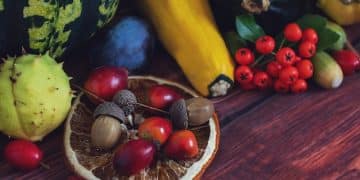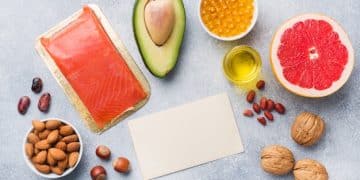Lower Cholesterol with Delicious Recipes: Cardiologist-Approved
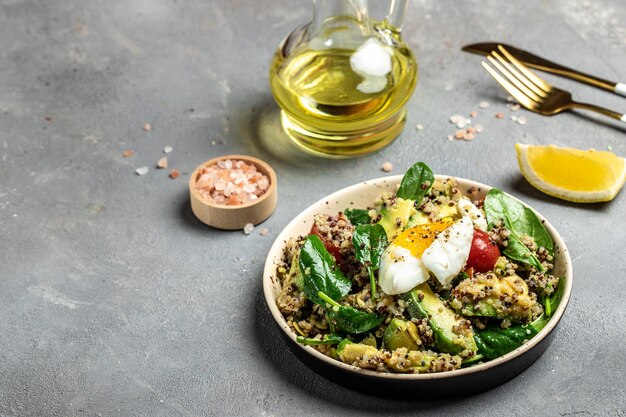
Discover three heart-healthy recipes recommended by cardiologists to help you lower your cholesterol naturally and enjoy delicious, nutritious meals.
High cholesterol can lead to serious health issues, but the good news is that managing it can be both effective and enjoyable. Explore these three heart-healthy recipes recommended by cardiologists to help lower your cholesterol while savoring delicious, nutritious meals.
Understanding Cholesterol and Heart Health
Cholesterol is a waxy substance found in your blood that’s essential for building healthy cells. However, high levels of cholesterol, particularly LDL (low-density lipoprotein) cholesterol, can increase your risk of heart disease. Making informed dietary choices is a powerful way to manage cholesterol and improve your overall heart health.
The Role of Diet in Cholesterol Management
Diet plays a crucial role in managing cholesterol levels. Saturated and trans fats can raise LDL cholesterol, while soluble fiber and healthy unsaturated fats can help lower it. By focusing on heart-healthy foods, you can significantly impact your cholesterol levels and reduce your risk of heart disease.
Key Nutrients for Lowering Cholesterol
Several nutrients are particularly beneficial for lowering cholesterol. These include:
- Soluble Fiber: Found in foods like oats, beans, apples, and citrus fruits, soluble fiber helps reduce the absorption of cholesterol into your bloodstream.
- Unsaturated Fats: Replacing saturated and trans fats with unsaturated fats, such as those found in olive oil, avocados, and nuts, can improve cholesterol levels.
- Omega-3 Fatty Acids: Present in fatty fish like salmon, mackerel, and sardines, omega-3 fatty acids can help lower triglycerides, another type of fat in the blood.
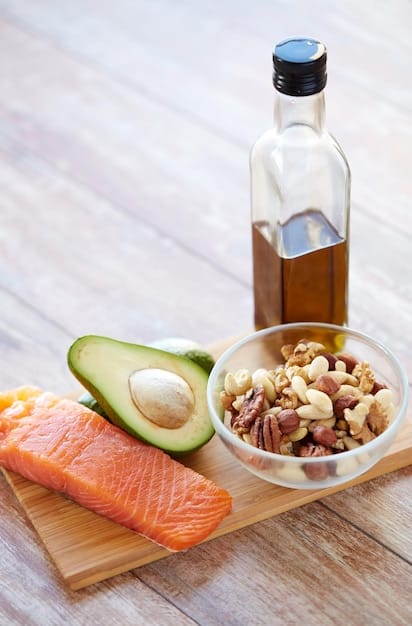
Incorporating these nutrients into your diet through delicious and well-planned meals is a sustainable and enjoyable way to manage your cholesterol and promote heart health. Remember, small changes can make a big difference over time.
Recipe 1: Mediterranean Quinoa Salad
This Mediterranean Quinoa Salad is packed with heart-healthy ingredients and bursting with flavor. Quinoa is a complete protein and a great source of fiber, while the vegetables and olive oil provide essential nutrients and healthy fats.
Ingredients You’ll Need
- 1 cup quinoa, cooked
- 1 cup chopped cucumber
- 1 cup chopped tomatoes
- 1/2 cup chopped red onion
- 1/2 cup Kalamata olives, halved
- 1/4 cup crumbled feta cheese (optional)
- 1/4 cup fresh parsley, chopped
- 3 tablespoons olive oil
- 2 tablespoons lemon juice
- Salt and pepper to taste
Step-by-Step Instructions
- Cook the quinoa according to package directions and let it cool.
- In a large bowl, combine the cooked quinoa, cucumber, tomatoes, red onion, olives, feta cheese (if using), and parsley.
- In a small bowl, whisk together the olive oil, lemon juice, salt, and pepper.
- Pour the dressing over the quinoa mixture and toss gently to combine.
- Serve immediately or chill for later.
This salad is a refreshing and nutritious way to lower cholesterol. The combination of fiber-rich quinoa, fresh vegetables, and heart-healthy olive oil makes it a perfect meal for promoting cardiovascular health. Enjoy it as a light lunch or a satisfying side dish.
Recipe 2: Baked Salmon with Roasted Vegetables
Baked Salmon with Roasted Vegetables is a delicious and easy-to-prepare meal that’s rich in omega-3 fatty acids and essential vitamins. Salmon is an excellent source of lean protein and healthy fats, while the roasted vegetables provide fiber and antioxidants.
Choosing the Right Salmon
When selecting salmon, opt for wild-caught varieties whenever possible. Wild salmon tends to be lower in saturated fat and higher in omega-3 fatty acids compared to farm-raised salmon. If wild salmon isn’t available, choose a sustainably farmed option.
Selecting Your Vegetables
A variety of vegetables can be used for this recipe. Some excellent choices include:
- Broccoli florets
- Bell peppers (various colors)
- Red onion wedges
- Asparagus spears
- Carrot slices
Baking Instructions
- Preheat your oven to 400°F (200°C).
- Line a baking sheet with parchment paper.
- Arrange the vegetables in a single layer on the baking sheet.
- Drizzle the vegetables with olive oil, and season with salt, pepper, and any other desired herbs (such as rosemary or thyme).
- Place the salmon fillets on the baking sheet alongside the vegetables.
- Bake for 15-20 minutes, or until the salmon is cooked through and the vegetables are tender.
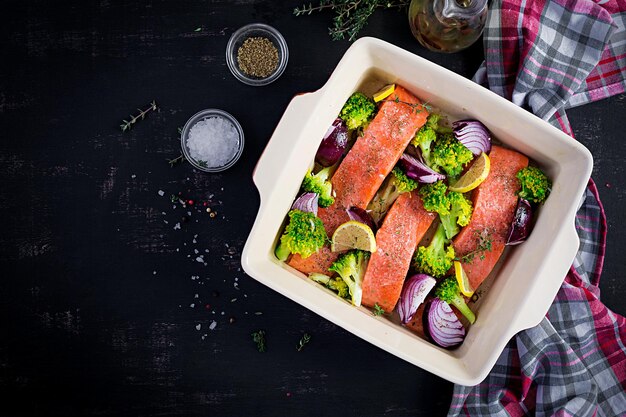
This baked salmon and roasted vegetable dish is a flavorful and nutritious way to lower cholesterol and support heart health. The omega-3 fatty acids in salmon, combined with the fiber and antioxidants in the vegetables, make it a powerhouse meal for promoting cardiovascular wellness.
Recipe 3: Oatmeal with Berries and Nuts
Oatmeal with Berries and Nuts is a simple and satisfying breakfast that’s packed with soluble fiber and antioxidants. Oatmeal is a fantastic source of soluble fiber, which can help lower LDL cholesterol, while berries and nuts provide additional nutrients and healthy fats.
The Benefits of Oatmeal
Oatmeal is a breakfast staple for its heart-healthy benefits. The soluble fiber in oats helps to reduce the absorption of cholesterol in the bloodstream, contributing to lower overall cholesterol levels. Starting your day with oatmeal is a proactive step towards better heart health.
Adding Berries and Nuts
To enhance the flavor and nutritional value of your oatmeal, consider adding:
- Fresh or frozen berries (such as blueberries, strawberries, or raspberries)
- A sprinkle of chopped nuts (such as almonds, walnuts, or pecans)
- A drizzle of honey or maple syrup (optional)
Preparation Instructions
- Prepare oatmeal according to package directions using water or milk (dairy or non-dairy).
- Once the oatmeal is cooked, transfer it to a bowl.
- Top with your choice of berries and nuts.
- Add a drizzle of honey or maple syrup for extra sweetness, if desired.
This oatmeal with berries and nuts recipe is a quick and nutritious way to start your day and lower cholesterol. The soluble fiber in oatmeal, combined with the antioxidants in berries and the healthy fats in nuts, makes it a winning combination for supporting heart health.
Tips for Maintaining Healthy Cholesterol Levels
In addition to incorporating these recipes into your diet, there are several other lifestyle factors that can contribute to maintaining healthy cholesterol levels. These include regular exercise, maintaining a healthy weight, and avoiding smoking.
The Importance of Regular Exercise
Regular physical activity can help raise HDL (high-density lipoprotein) cholesterol, often referred to as “good” cholesterol, while also helping to lower LDL cholesterol and triglycerides. Aim for at least 30 minutes of moderate-intensity exercise most days of the week.
Maintaining a Healthy Weight
Being overweight or obese can increase your LDL cholesterol and lower your HDL cholesterol. Losing even a small amount of weight can have a positive impact on your cholesterol levels. Focus on a balanced diet and regular exercise to maintain a healthy weight.
The Dangers of Smoking
Smoking can lower your HDL cholesterol and increase your risk of heart disease. Quitting smoking is one of the best things you can do for your overall health, including your cholesterol levels. Seek support from healthcare professionals or support groups if you’re struggling to quit.
By adopting a combination of healthy dietary habits and lifestyle choices, you can effectively manage your cholesterol levels and reduce your risk of heart disease. Remember, small changes can lead to significant long-term benefits.
Consulting with a Healthcare Professional
While dietary and lifestyle changes can be highly effective in managing cholesterol, it’s essential to consult with a healthcare professional for personalized guidance. A doctor can assess your individual risk factors and recommend appropriate interventions, which may include medication in some cases.
Understanding Your Cholesterol Numbers
Regular cholesterol screenings are crucial for monitoring your cholesterol levels and detecting any potential issues early on. A doctor can interpret your cholesterol numbers and provide recommendations based on your specific needs. Understanding your cholesterol numbers empowers you to take proactive steps towards better heart health.
The Role of Medication
In some cases, medication may be necessary to manage high cholesterol levels. Statins are a common type of medication used to lower LDL cholesterol, but there are other options available as well. A doctor can determine if medication is appropriate for you based on your individual circumstances.
Personalized Recommendations
Every individual is unique, and what works for one person may not work for another. A healthcare professional can provide personalized recommendations tailored to your specific needs and risk factors. Don’t hesitate to seek professional guidance to optimize your cholesterol management strategy.
Remember that managing cholesterol is a collaborative effort between you and your healthcare provider. Open communication and a proactive approach are key to achieving optimal heart health.
| Key Point | Brief Description |
|---|---|
| ❤️ Heart-Healthy Recipes | Three cardiologist-recommended recipes to lower cholesterol naturally. |
| 🥗 Mediterranean Diet | Focus on vegetables, lean proteins, and healthy fats like olive oil. |
| 🏃 Regular Exercise | Aim for at least 30 minutes of moderate-intensity exercise daily. |
| 🚭 Quit Smoking | Smoking lowers good cholesterol and increases heart disease risk. |
What are some quick breakfast options to lower cholesterol?
▼
Oatmeal with berries and nuts is a great choice. You can also try a smoothie with spinach, banana, and almond milk. These are quick, easy, and packed with cholesterol-lowering ingredients.
▼
Yes, fatty fish like salmon, mackerel, and sardines are rich in omega-3 fatty acids, which can help lower triglycerides and improve overall cholesterol levels. Aim to include fish in your diet at least twice a week.
▼
Leafy greens, broccoli, carrots, and bell peppers are all excellent choices. They’re packed with fiber and antioxidants, which can help lower cholesterol and promote heart health. Aim for a variety of colorful vegetables.
▼
It’s generally recommended to have your cholesterol checked every 4-6 years, starting at age 20. However, your doctor may recommend more frequent screenings if you have risk factors for heart disease.
▼
Yes, chronic stress can contribute to higher cholesterol levels. Practicing stress-management techniques like meditation, yoga, or spending time in nature can help improve your overall health, including your cholesterol levels.
Conclusion
By incorporating these heart-healthy recipes and lifestyle tips into your daily routine, you can take proactive steps towards managing your cholesterol and promoting long-term cardiovascular health. Remember to consult with a healthcare professional for personalized guidance and to ensure the best approach for your individual needs.

